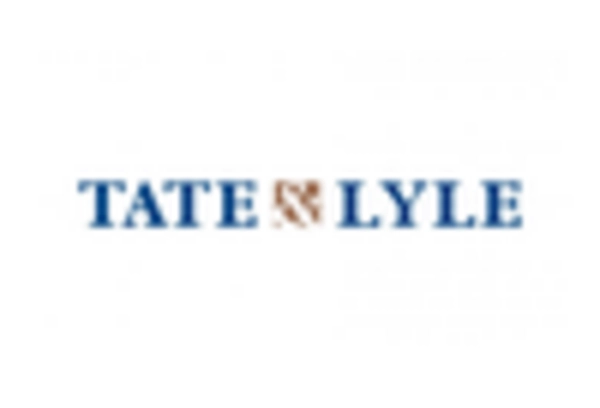Expansion of Biofuels Production
The expansion of biofuels production is emerging as a significant driver in the Industrial Sugar Market. Sugarcane and sugar beet are increasingly being utilized as feedstocks for bioethanol production, which is gaining traction as a renewable energy source. Recent data suggests that the biofuels market is anticipated to grow by over 6% annually, leading to heightened demand for industrial sugar. This shift not only supports energy sustainability but also creates new opportunities for sugar producers. The Industrial Sugar Market is likely to benefit from this trend, as the dual use of sugar for both food and energy applications could enhance profitability and market stability.
Rising Demand for Processed Foods
The increasing demand for processed foods is a primary driver in the Industrial Sugar Market. As consumers seek convenience, manufacturers are responding by incorporating sugar into a variety of products, including snacks, beverages, and ready-to-eat meals. This trend is reflected in market data, which indicates that the processed food sector is projected to grow at a compound annual growth rate of approximately 4.5% over the next five years. Consequently, the need for industrial sugar is expected to rise, as it serves as a key ingredient in enhancing flavor and preserving food products. The Industrial Sugar Market must adapt to this growing demand by ensuring a steady supply of sugar to meet the needs of food manufacturers.
Regulatory Changes and Trade Policies
Regulatory changes and trade policies are pivotal factors affecting the Industrial Sugar Market. Governments worldwide are implementing various policies aimed at regulating sugar production and consumption, often in response to health concerns and economic factors. For instance, tariffs on sugar imports can influence domestic prices and availability, impacting manufacturers' costs. Recent analyses indicate that countries with stringent sugar regulations may experience fluctuations in their industrial sugar markets, as producers adapt to comply with new standards. The Industrial Sugar Market must remain vigilant and responsive to these regulatory shifts to ensure compliance and maintain competitive advantage.
Technological Innovations in Sugar Refining
Technological innovations in sugar refining processes are driving efficiency and productivity within the Industrial Sugar Market. Advances in extraction and purification technologies are enabling producers to enhance yield and reduce waste, thereby lowering production costs. Recent developments suggest that the adoption of automation and data analytics in sugar processing could lead to a 10% increase in operational efficiency. As the industry seeks to optimize production methods, these innovations are likely to play a crucial role in meeting the rising demand for industrial sugar. The Industrial Sugar Market stands to benefit from these technological advancements, which may also contribute to sustainability efforts by minimizing environmental impact.
Health Trends Influencing Sugar Alternatives
Health trends are significantly influencing consumer preferences, which in turn impacts the Industrial Sugar Market. As awareness of health issues related to sugar consumption rises, there is a growing shift towards sugar alternatives and low-calorie sweeteners. Despite this trend, traditional sugar remains a staple in many products, particularly in the beverage and confectionery sectors. Market data indicates that while the demand for sugar alternatives is increasing, the overall consumption of industrial sugar is projected to remain stable, suggesting a complex relationship between health trends and sugar usage. The Industrial Sugar Market must navigate these changing consumer preferences while maintaining its relevance in the market.


















Leave a Comment